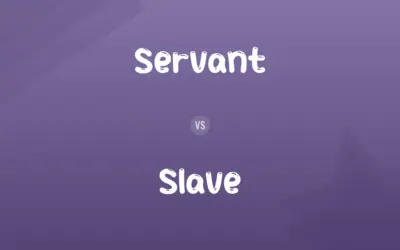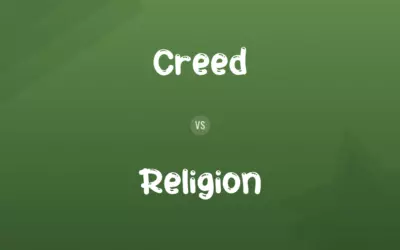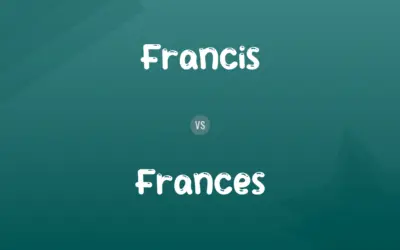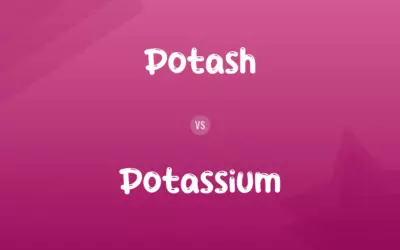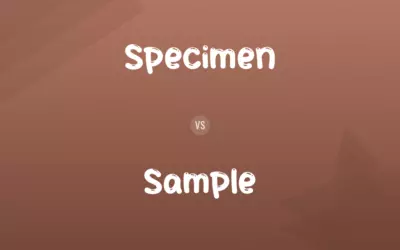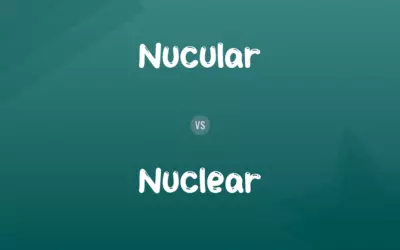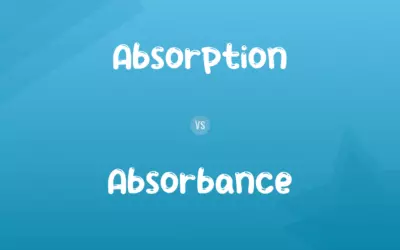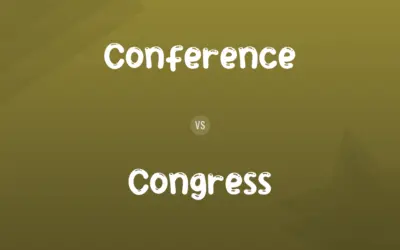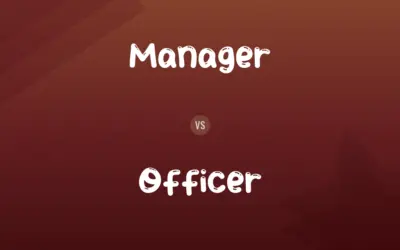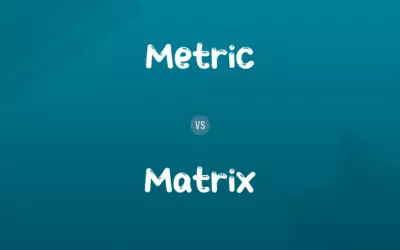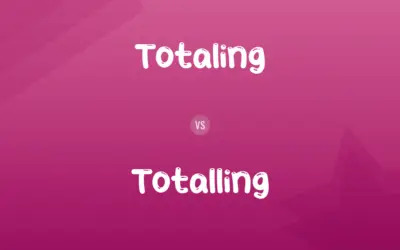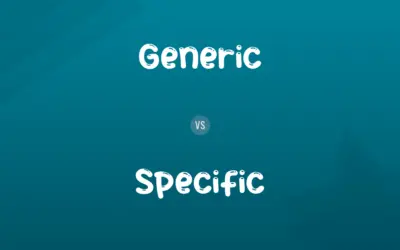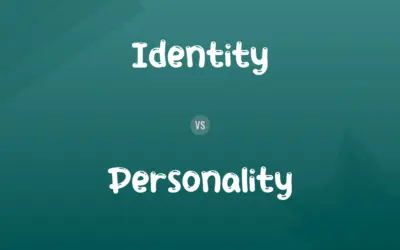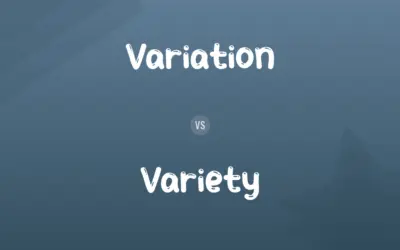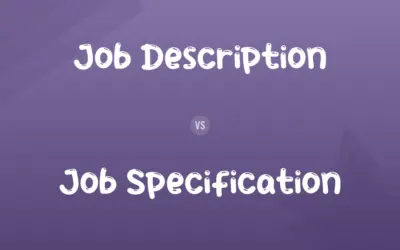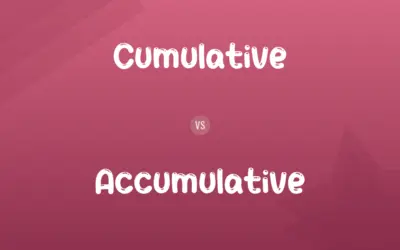Sequence vs. Chronological Order: Difference and Comparison
Edited by Muazma Batool — By Muneeza Rehman — Published on March 29, 2024
Sequence refers to the order in which events or steps occur, often based on logical relationships, while chronological order specifically arranges events by their time of occurrence, from earliest to latest.
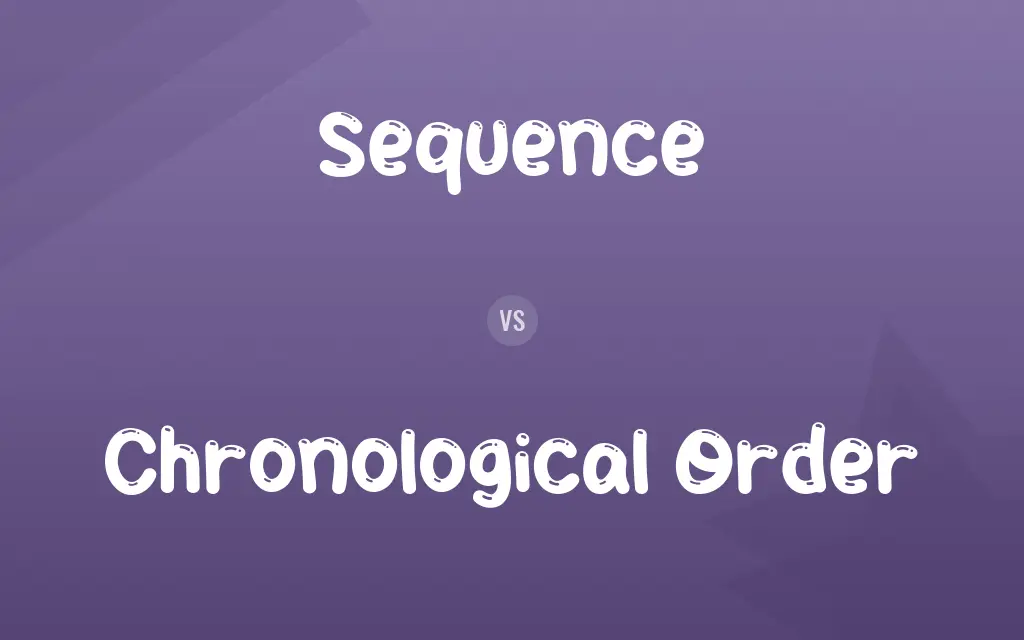
Difference Between Sequence and Chronological Order
Sequence and chronological order are both methods of organizing information, but they differ in their basis for arrangement. Sequence focuses on the logical progression of events or steps, which may not necessarily align with time. For example, a recipe is presented in sequence for the dish to turn out correctly, regardless of the time each step takes. Chronological order, however, is strictly time-based, emphasizing the temporal sequence of events. This is commonly used in histories, timelines, and narratives to reflect the order in which events actually happened.
Muneeza Rehman
Mar 29, 2024
In storytelling or process explanation, a sequence might be chosen to highlight cause and effect, importance, or complexity, without adhering to the exact timeline of events. Chronological order ensures a linear progression through time, making it easier to follow historical events, developments, or narratives that rely on temporal continuity for clarity.
Muneeza Rehman
Mar 29, 2024
Both methods serve to organize details, the choice between sequence and chronological order depends on the purpose of the communication. Sequence is preferred when the logical order of information presentation is paramount, whereas chronological order is selected to illustrate the timeline of events clearly and accurately.
Muneeza Rehman
Mar 29, 2024
Sequence is about the arrangement that best serves the understanding or effectiveness of the content, which can sometimes include flashbacks or thematic organization in literature. Chronological order, by contrast, is dedicated to preserving the integrity of time, ensuring that the audience can follow the progression of time without confusion.
Jonathan
Mar 29, 2024
Sequence vs. Chronological Order Comparison Chart
Basis of Arrangement
Logical or functional relationships among events/steps.
Time of occurrence, from earliest to latest.
Muneeza Rehman
Mar 29, 2024
Purpose
To illustrate a process or emphasize importance.
To document events in the order they happened.
Muneeza Rehman
Mar 29, 2024
Common Uses
Recipes, tutorials, cause and effect analysis.
Histories, timelines, autobiographies.
Muneeza Rehman
Mar 29, 2024
Focus
Effectiveness or understanding of information.
Temporal progression and historical accuracy.
Muneeza Rehman
Mar 29, 2024
Flexibility
Can rearrange events based on logic or impact.
Fixed to the timeline of events.
Muneeza Rehman
Mar 29, 2024
Sequence vs. Chronological Order Definitions
◉Sequence
Sequence arranges steps or events based on logic.
The sequence of instructions in the manual ensures the device works properly.
Muneeza Rehman
Feb 27, 2024
◉Chronological Order
It's preferred for timelines and histories.
The museum exhibit displayed artifacts in chronological order by era.
Henry
Feb 27, 2024
◉Sequence
It's crucial for understanding processes.
Learning the sequence of muscle movements was key to mastering the dance.
Olivia
Feb 27, 2024
◉Chronological Order
It's used in historical narratives.
The documentary presented the events of the war in strict chronological order.
Muneeza Rehman
Feb 27, 2024
◉Sequence
Sequence can prioritize by importance.
The article presented the arguments in sequence from least to most compelling.
Muneeza Rehman
Feb 27, 2024
◉Chronological Order
Chronological order clarifies timelines.
The project timeline was laid out in chronological order to track progress.
Muneeza Rehman
Feb 27, 2024
◉Sequence
It's used in storytelling for effect.
The novel's sequence highlighted the character's growth before revealing the climax.
Muneeza Rehman
Feb 27, 2024
◉Chronological Order
Chronological order simplifies complex histories.
The teacher explained the events leading to the revolution in chronological order.
Muneeza Rehman
Feb 27, 2024
◉Sequence
Sequence aids in problem-solving.
The troubleshooting guide used a specific sequence to diagnose the issue.
Kaitlyn
Feb 27, 2024
◉Chronological Order
Chronological order aligns events by time.
The biography was written in chronological order to trace the person's life.
Muneeza Rehman
Feb 27, 2024
Sequence vs. Chronological Order Frequently Asked Questions
Can a story be told in sequence without being chronological?
Yes, stories often use a non-chronological sequence for narrative effect, such as flashbacks or thematic organization.
Muneeza Rehman
Mar 29, 2024
Why is chronological order important in history?
Chronological order is crucial for understanding the temporal progression of events and their historical context.
Muneeza Rehman
Mar 29, 2024
How do sequence and chronological order differ?
While sequence is organized by logical steps or importance, chronological order is strictly organized by time.
Muneeza Rehman
Mar 29, 2024
What does chronological order mean?
Chronological order means arranging events according to their time of occurrence, from earliest to latest.
Muneeza Rehman
Mar 29, 2024
How does sequence benefit learning and comprehension?
Sequence can enhance comprehension by presenting information in a logical order that builds understanding step by step.
Jonathan
Mar 29, 2024
How do filmmakers use sequence and chronological order?
Filmmakers may use non-chronological sequences to create suspense or reveal character development, while chronological order can help maintain clarity in storytelling.
Muneeza Rehman
Mar 29, 2024
What is sequence?
Sequence is the order in which events or steps are arranged based on logical relationships, not necessarily time-bound.
Muneeza Rehman
Mar 29, 2024
Is chronological order always the best way to present information?
Not always; the best method depends on the purpose of the presentation. Chronological order is best for historical accuracy, while sequence is better for explaining processes or building arguments.
Muneeza Rehman
Mar 29, 2024
What is the significance of sequence in scientific research?
In scientific research, sequence is crucial for replicating experiments accurately, ensuring that each step is followed in the correct order for valid results.
Nolan
Mar 29, 2024
How do timelines use chronological order?
Timelines use chronological order to visually represent the sequence of events over time, providing a clear historical overview.
William
Mar 29, 2024
What challenges arise with non-chronological storytelling?
Non-chronological storytelling can confuse audiences if the sequence of events isn't clear, requiring careful structuring to maintain coherence.
William
Mar 29, 2024
What role does chronological order play in autobiographies?
In autobiographies, chronological order helps readers follow the course of the author's life, making the narrative clearer and more coherent.
Muneeza Rehman
Mar 29, 2024
Can the sequence be subjective?
Yes, sequence can be subjective, especially in narrative or argumentative contexts, where the order of presentation may vary based on the author's purpose.
Henry
Mar 29, 2024
Can sequence affect the outcome of a process?
Yes, the sequence in which steps are executed can critically impact the effectiveness and outcome of a process.
Elijah
Mar 29, 2024
How does understanding sequence and chronological order aid in daily life?
Understanding these concepts helps in planning, organizing tasks, comprehending historical and current events, and following narratives or instructions effectively.
Henry
Mar 29, 2024
Content Creators
Written by
Muneeza RehmanAt Comparisons.wiki, Muneeza skillfully navigates the vast sea of information, ensuring clarity and accuracy as the lead content editor. With a keen eye for detail, she curates every comparison to enlighten and engage readers.
Edited by
Muazma BatoolAs a content editor, Muazma Batool is not just a grammar guru but a creative mastermind who breathes life into every word. With an eagle eye for detail and a passion for storytelling, she transforms bland text into engaging content that captivates audiences and drives results.


